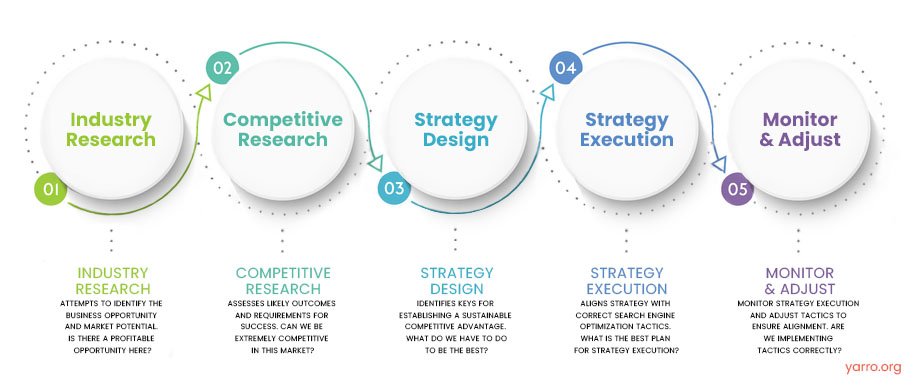SEO product management: Key framework and fundamentals
February 25, 2024 | by seotoolsethub.com

SEO product management is a crucial aspect of any successful online business. In today’s digital age, where consumers rely heavily on search engines to find products and services, having a solid SEO strategy is essential for product managers. By optimizing their products for search engines, they can increase visibility, drive organic traffic, and ultimately boost sales.
Key Takeaways
- Understanding the basics of SEO product management is crucial for success
- A solid SEO strategy is essential for effective product management
- Identifying target audiences and keywords is key to optimizing SEO
- Leveraging data and analytics can inform successful SEO product decisions
- Ongoing measurement and tracking of SEO success is critical for ongoing success
Understanding the basics of SEO product management
SEO product management involves the application of search engine optimization techniques to improve the visibility and ranking of a product in search engine results pages (SERPs). It requires an understanding of key concepts and terminology such as keywords, backlinks, on-page optimization, off-page optimization, and content strategy.
The importance of a solid SEO strategy for product management
A strong SEO strategy can bring numerous benefits to product management. Firstly, it helps increase organic traffic by improving the visibility and ranking of products in SERPs. This means that potential customers are more likely to discover the products when searching for relevant keywords.
Secondly, an effective SEO strategy can enhance brand credibility and trustworthiness. When a product consistently appears at the top of search results pages, it signals to consumers that it is reputable and reliable.
Furthermore, SEO plays a significant role in driving conversions and sales. By targeting specific keywords related to their products or services through optimized content creation and website structure improvements (on-page optimization), businesses can attract highly relevant traffic that is more likely to convert into paying customers.

Key components of successful SEO product management
| Keyword Research | Identifying the most relevant and profitable keywords for the product. |
| On-Page Optimization | Optimizing the product page content, title tags, meta descriptions, and header tags for the target keywords. |
| Technical SEO | Ensuring the product website is technically optimized for search engines, including site speed, mobile responsiveness, and crawlability. |
| Link Building | Acquiring high-quality backlinks to the product website from authoritative sources. |
| Content Marketing | Creating and promoting high-quality content that attracts links and social shares. |
| Analytics and Reporting | Tracking and analyzing key metrics such as traffic, rankings, and conversions to measure the success of the SEO strategy. |
1) Research and analysis: Before implementing any SEO strategies or tactics for your products or services, thorough research should be conducted to understand your target audience’s needs/wants/demands/preferences as well as competitors’ strategies.
2) Keyword research: Identifying relevant keywords that have high search volume but low competition is crucial for optimizing your website’s content effectively.
3) Content strategy: Creating high-quality content that aligns with your target audience’s interests and needs is essential for SEO success. This includes blog posts, articles, videos, infographics, and more.
4) On-page optimization: Optimizing various on-page elements such as meta tags, headings, URLs, and internal linking structures can significantly improve your website’s visibility in search engine results.
5) Off-page optimization: Building high-quality backlinks from reputable websites through guest blogging, influencer outreach, and social media promotion can boost your website’s authority and improve its ranking in SERPs.

Identifying target audiences and keywords for SEO optimization
Understanding your target audience is crucial for effective SEO product management. By knowing their demographics, interests, preferences, and pain points you can tailor your content to meet their needs.
Conducting keyword research is another vital step in optimizing your products for search engines. Keyword research involves identifying the words or phrases that potential customers are using when searching for products or services similar to yours. There are various tools available such as Google Keyword Planner or SEMrush that can help you find relevant keywords with high search volume but low competition.
Choosing the right keywords for your product is essential as it determines how well you will rank in search engine results pages (SERPs). It’s important to strike a balance between relevance (keywords that accurately describe what you offer) and competitiveness (keywords that have a reasonable chance of ranking well).
Leveraging data and analytics to inform SEO product decisions
Data plays a crucial role in SEO product management. By tracking and analyzing data related to website traffic sources, user behavior on-site (bounce rate), and conversion rates from organic traffic sources versus paid advertising campaigns – businesses can make informed decisions about their SEO strategies.
There are several tools available like Google Analytics or Moz Pro that provide valuable insights into how users interact with websites including which pages they visit most frequently or where they drop off during the conversion process.
Using this data, product managers can identify areas for improvement and make data-driven decisions to optimize their products for search engines.
Developing a content strategy for SEO product management
Content is king when it comes to SEO. Creating high-quality, relevant, and engaging content is essential for attracting organic traffic and improving search engine rankings.
Various types of content can be created such as blog posts, articles, videos, infographics, and case studies – each serving a different purpose in terms of providing value to the target audience.
Best practices for content creation include conducting keyword research to identify relevant topics and incorporating those keywords naturally into the content. Additionally, creating evergreen content that remains relevant over time can help drive consistent organic traffic.
Optimizing product pages for search engines
On-page optimization refers to optimizing various elements on your website’s pages to improve their visibility in search engine results pages (SERPs).
The importance of on-page optimization cannot be overstated as it directly impacts how well your products rank in SERPs. Best practices include optimizing meta tags (title tag and meta description), using descriptive URLs with targeted keywords, and incorporating headings (H1-H6) that include relevant keywords or phrases related to the product being promoted on each page – among other factors.
Common mistakes to avoid when optimizing product pages include keyword stuffing (overusing keywords), and using duplicate or thin content across multiple pages without adding any unique value – both of which can negatively impact your website’s ranking in SERPs.
Utilizing backlinks and off-page SEO tactics for product management
Off-page optimization involves activities outside of your website that influence its visibility in search engine results pages (SERPs). One crucial aspect of off-page optimization is acquiring high-quality backlinks from reputable websites within your industry or niche.
Backlinks act as votes of confidence from other websites indicating that they find your content valuable enough to link back to it. The more high-quality backlinks you have, the more authority your website gains in the eyes of search engines.
Best practices for off-page optimization include guest blogging on relevant websites, influencer outreach, social media promotion, and participating in industry forums or communities where you can share valuable insights and link back to your website.
Measuring and tracking SEO success in product management
Measuring and tracking key metrics is essential to determine the effectiveness of your SEO strategies and make data-driven decisions.
Key metrics to track include organic traffic volume (number of visitors coming from search engines), keyword rankings (how well your products rank for specific keywords), and conversion rates from organic traffic sources versus paid advertising campaigns – among others.
Tools such as Google Analytics or Moz Pro provide valuable insights into these metrics allowing product managers to interpret data accurately and use it to optimize their products for search engines effectively.
Common pitfalls to avoid in SEO product management
There are several common mistakes that product managers should avoid when implementing SEO strategies:
1) Keyword stuffing: Overusing keywords on a page can negatively impact its ranking in SERPs as it appears spammy.
2) Duplicate content: Using duplicate or thin content across multiple pages without adding any unique value can result in lower rankings.
3) Ignoring user experience: Focusing solely on optimizing search engines without considering how users interact with your website can lead to high bounce rates and low conversions.
4) Neglecting mobile optimization: With an increasing number of users accessing websites through mobile devices, neglecting mobile optimization can result in poor user experience and lower rankings.
5) Not adapting to algorithm changes: Search engine algorithms are constantly evolving. Failing to adapt your SEO strategies accordingly can lead to a decline in visibility and rankings.
Best practices for ongoing SEO product management success
Maintaining a strong SEO strategy requires ongoing effort. Here are some best practices:
1) Regularly update keyword research: As consumer behavior and search trends change, it’s important to stay up-to-date with relevant keywords and adjust your content strategy accordingly.
2) Monitor website performance: Regularly track key metrics such as organic traffic volume, keyword rankings, and conversion rates to identify areas for improvement.
3) Stay informed about algorithm updates: Search engine algorithms are constantly evolving. Stay updated with industry news and adapt your SEO strategies accordingly.
4) Continuously optimize content: Regularly update existing content to ensure it remains relevant and valuable to your target audience. Additionally, create new content that addresses their changing needs or interests.
In conclusion, SEO product management is a critical aspect of online business success. By understanding the basics of SEO, developing a solid strategy, identifying target audiences and keywords, leveraging data and analytics, optimizing product pages for search engines, and utilizing off-page tactics like backlinks – businesses can improve their visibility in search engine results pages (SERPs), drive organic traffic, increase conversions/sales.
It’s important to avoid common pitfalls such as keyword stuffing or duplicate content while following best practices for ongoing optimization success. By continuously monitoring performance metrics and adapting strategies based on algorithm changes – businesses can maintain a strong SEO presence in an ever-evolving digital landscape.
RELATED POSTS
View all


